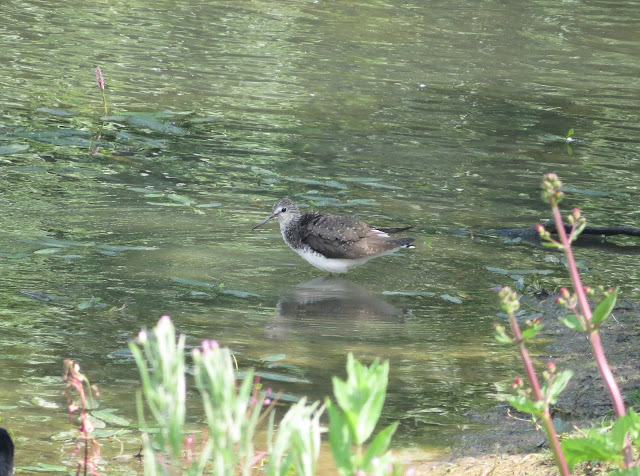With a Little Bittern being
present at Old Moor RSPB reserve in Yorkshire since the Tuesday and having
missed the Elton Reservoir bird last May through being away in Ireland, I was
quite keen to see this dainty Heron in the UK. Proving to be quite elusive
during its stay with sightings usually the most frequent in the early morning,
it wasn’t until the weekend that we could really do anything about it.
With some birders dipping on
multiple occasions and others having put in hard slogs of 30 hours or more
before a sighting, I was slightly apprehensive when there had been no sign on
the Friday since around 10:45am. However, after an early start involving loose
horses and driving in heavy fog, we arrived at the reserve in good time and
were thankfully met with the news on RBA that the Little Bittern had been seen again
that morning perched in a tree in front of Bittern Hide.
With the majority of sightings
coming from the aptly named ‘Bittern hide’ and the nearby Reedbed screen, we
arrived at the hide in good time just before half 8. With the Little Bittern
favouring that section of reeds, it was now just a matter of waiting….
| The view from Bittern hide |
With several birders having
walkie-talkies and being spread out over the area, updates came through that
the bird was calling from a patch of reeds in front of the trees, but just wasn’t
visible. Our luck was in however, as around 15 minutes later the shout went up
that it was flying. It really was a “blink and you’ll miss it” kind of moment,
and for the first 5 seconds I just couldn’t spot the bird. Apparently heading
right over the reedbed and panicking slightly that it would dip behind the
reeds and out of sight, I thankfully managed to pick it up as it flew behind a
blue metal pump, surprisingly owl-like when flying and the contrasting cream
and black wings now standing out even at a distance.
I watched it bank around over
the reeds before it dipped below behind the trees and was lost to view.
Incredible! Extremely glad we’d both managed to get on it and thankful that we wouldn’t
have to sit in the hide for several more hours (memories of the Little Crake
still haunt me!) although distant, we were both satisfied with our views, having
seen Little Bitterns showing well in the reeds at close quarters in Spain
before.
| My dodgy Spanish Little Bittern Record shot! |
| Little Bittern in Spain - A much better photo by Alex Jones |
The rain and mist gradually
worsened, and happy with our flight views we headed off to explore the rest of
the reserve. A Black-necked Grebe was new in for the day, most probably moved
on from its previous haunt by the overnight flooding, and that along with an
unseasonal Goldeneye were the highlights. A smart Green Sandpiper made for a
nice distraction after the American Wigeon at Wath Ings hide decided not to play ball - disappearing
off in to the willows for the entire duration we were there -only coming out and
showing well an hour after we had left. Still I’d glad it was the American
Wigeon that gave us the run around as opposed to the Little Bittern (like has
happened to many birders that have tried to connect!)
With Little Bitterns already breeding at Ham Wall RSPB in Somerset over the past few years, and with several records already this year of this tiny Mediterranean Heron, it is only a matter of time before they become much more frequent in the UK. With plenty of suitable reedbed habitat just waiting to be colonised, it would be great to have them as a much more regular breeder in Britain - following the successful movement north of both Little and Great White Egrets. With Purple Herons, Night Herons and even Squaccos seen much more frequently, it is great to see these rare herons expanding in range and becoming a more familiar sight on our shores.
With Little Bitterns already breeding at Ham Wall RSPB in Somerset over the past few years, and with several records already this year of this tiny Mediterranean Heron, it is only a matter of time before they become much more frequent in the UK. With plenty of suitable reedbed habitat just waiting to be colonised, it would be great to have them as a much more regular breeder in Britain - following the successful movement north of both Little and Great White Egrets. With Purple Herons, Night Herons and even Squaccos seen much more frequently, it is great to see these rare herons expanding in range and becoming a more familiar sight on our shores.


No comments:
Post a Comment